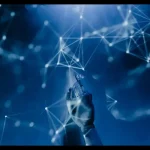When searching for information about Shani Levni, you’ll find numerous online articles presenting Shani Levni as an emerging creator: an artist, activist, and cultural thinker. However, most of these writings lack solid, verifiable sources. This guide will help you distinguish established facts from speculation, understand the possible reasons for this confusion, and provide you with the tools to find reliable information.
What Can Be Confirmed
Solo exhibition titled “A Parallel Universe” at the Sputnik Gallery.
A public event titled “A Parallel Universe” was held at the Sputnik Gallery. The description states that “Shani” (last name not given) presented paintings blending spiritual themes and symbolic messages, notably referencing the “72 Names of God.” The exhibition also offered an interactive experience with visitors (card readings) and explored themes such as the heart, change, and personal vision.
This cannot be confirmed with certainty
Many claims made in articles and blogs have not been confirmed by reliable sources:
| Status | Justification of the Claim |
| Multidisciplinary career including live performance, slam poetry and activism. | It is discussed in many lifestyle blogs, but there are no confirmed interviews or official biographies of the artist that detail these disciplines. |
| University degrees (studies in literature, sociology, cultural studies) | So far, no certificate, institution or interview has been found to validate it. |
| Public conferences, collaborations with NGOs, community workshops | She is mentioned in speculative articles, but without names, dates, or official event pages. |
| Digital identity, national recognition, exhibitions in major museums | These claims are true, but no museum catalogue, no peer-reviewed journal, nor any credible source of information confirms them. |
Why does this confusion exist?
Several factors could explain this contradictory or exaggerated information:
- Recycled content/content aggregators: Numerous similar claims appear on various blogs and small websites, often with comparable wording, suggesting they have been copied or slightly adapted from an unverified original source.
- Lack of primary sources: There are no publicly available interviews, biographies, CVs, or institutional documents to confirm this information.
- Vague identity/ambiguous name: “Shani” is a fairly common first name; “Levni” may be less so, but without specific identifying details (dates, location, school, representative works), it is difficult to confirm whether all mentions refer to the same person.
- Articles formatted according to a template: Some texts seem to follow an optimistic narrative (artist + activism + identity + initial training + social impact) without providing supporting evidence, a pattern often used in generic articles about “emerging artists.” Sometimes, this information is mixed with unrelated elements (like the error concerning medicinal plants that you noted earlier), which further damages its credibility.
What to assume and what to consider as hypotheses:
When writing or talking about Shani Levni, it is safer to:
- Only assume what is confirmed: mention the “A Parallel Universe” exhibition at the Sputnik Gallery, the themes she addresses, and the existence of artworks signed “Shani” and related to these paintings.
- Present other claims as possible or speculative: for example, “Some profiles indicate that she is an activist,” “According to several blogs, she studied cultural studies,” “It is often mentioned that she practices performance art and public speaking.”
- Avoid combining unverified and confirmed claims in a way that creates a false sense of certainty. For example, don’t say “She’s an activist” unless you have concrete evidence of Shani Levni activism. Instead, say: “Many sources describe her work as socially engaged, although I haven’t found confirmation of institutional activism or organized community projects.”
Why this matters: for readers, writers, and collectors
- Accuracy builds trust. If you’re writing about Shani Levni (in a blog post, gallery brochure, etc.), using only verified information protects your reputation from risks. Readers expect names, dates, and exhibitions to be accurate.
- EEAT (Expertise, Authority, Reliability): To maintain your authority (or that of your website) when discussing artists, it’s best to cite official sources (gallery, CV, interviews) rather than repeating unverified claims.
- Fairness to the artist: If Shani Levni is an emerging artist, she deserves accurate representation; exaggerations or errors can mislead the public and potentially harm the artist.
Here’s what a reliable profile might look like if new information were available.
When more verified information becomes available, a robust profile should include:
- Full name, nationality, date of birth, education (names of institutions, years).
- A list of exhibitions with titles, venues, dates, and ideally, official gallery references.
- A description of the media used (painting, digital art, performance, etc.), including quotes from the artist.
- Verifiable themes—identity, memory, activism—supported by statements or critiques.
- Information on awards, residencies, and publications.
- Examples of community work or activist collaborations (names, projects).
A proposed revised outline for the article (based on verified information and hypotheses, presented with caution).
Here is an example of a well-structured article (which you can adapt for your website or magazine), showing how to present verified information and plausible hypotheses:
Shani Levni: An Emerging Artist with Spiritual and Social Reflections
Shani Levni is an artist whose work, imbued with spiritual symbolism and visual storytelling, is beginning to gain recognition. The exhibition “A Parallel Universe,” presented at the Sputnik Gallery, highlighted Shani Levni paintings blending religious motifs (such as the “72 Names of God”) and invited visitors to engage in interactive reflection.
While many sources describe Shani Levni as a multifaceted artist—visual arts, performance, writing—these claims primarily originate from lifestyle blogs and are not supported by any clear institutional sources. Some articles suggest that she draws inspiration from multicultural identity and a critical reflection on social issues; however, further investigation is needed.
Her art appears to explore themes of spirituality, introspection, and transformation, inviting viewers to look beyond appearances. Whether through color, symbolic imagery, or interactive experiences (such as the exhibition at the Sputnik Gallery), a quest for profound meaning is perceptible.
Until more official documentation becomes available (the artist’s website, gallery press releases, interviews), her trajectory—training, activism, public interventions—should be considered promising, but still provisional.
To learn more
If you would like to learn more about Shani Levni’s work and career, follow these steps to obtain more specific information:
Look for an official website (with a domain name registered in her name) or a professional social media account (Instagram, LinkedIn, gallery pages).
Consult event or gallery catalogs. Galleries often publish catalogs or press releases containing statements from the artist.
Look for interviews in art magazines or podcasts where she speaks.
Check if she is represented by a gallery. If a gallery exhibits her work, it will likely have documentation or a biography.
Check the reviews. Reviews published in newspapers, reputable cultural magazines, or academic publications carry more weight than anonymous blog posts.
Conclusion
Shani Levni could be a fascinating new voice in the art world, particularly at the intersection of spirituality, visual arts, and perhaps social commentary. However, current public information about her lacks solid evidence. To date, the only verified work attributed to her is the exhibition “A Parallel Universe” at the Sputnik Gallery. Other claims—regarding her activism, teaching, and lectures—deserve rigorous analysis and thorough verification.
When writing about her, it is crucial to clearly distinguish between what is proven and what is claimed but not verified, and to keep the information updated should more compelling evidence emerge.
Frequently Asked Questions: Who is Shani Levni?
Shani Levni is an emerging artist whose work explores themes of spirituality, identity, and social commentary. One of her confirmed exhibitions is “A Parallel Universe” at the Sputnik Gallery, which featured paintings with symbolic and spiritual motifs.
What kind of art does she create?
Her known work includes paintings that combine symbolic imagery with spiritual elements. Some sources also suggest that she explores multidisciplinary forms such as writing and performance, although these claims are still pending confirmation.
Where can I see Shani Levni’s work?
To date, her only confirmed exhibition is “A Parallel Universe” at the Sputnik Gallery. For information on her future exhibitions and projects, it is advisable to check the gallery’s announcements or the artist’s official channels as soon as they become available.
What themes does Shani Levni explore in her work?
Her art has been described as an exploration of spirituality, transformation, identity, and memory. The exhibition at the Sputnik Gallery, in particular, focused on inner vision, the “72 Names of God,” and change as a personal and social journey.
Is Shani Levni also an activist or public speaker?
Several online profiles mention her activism and public speaking engagements, but no official events confirm this. Until more reliable sources emerge, it is best to describe her primarily as an artist whose work addresses socially engaged themes.









